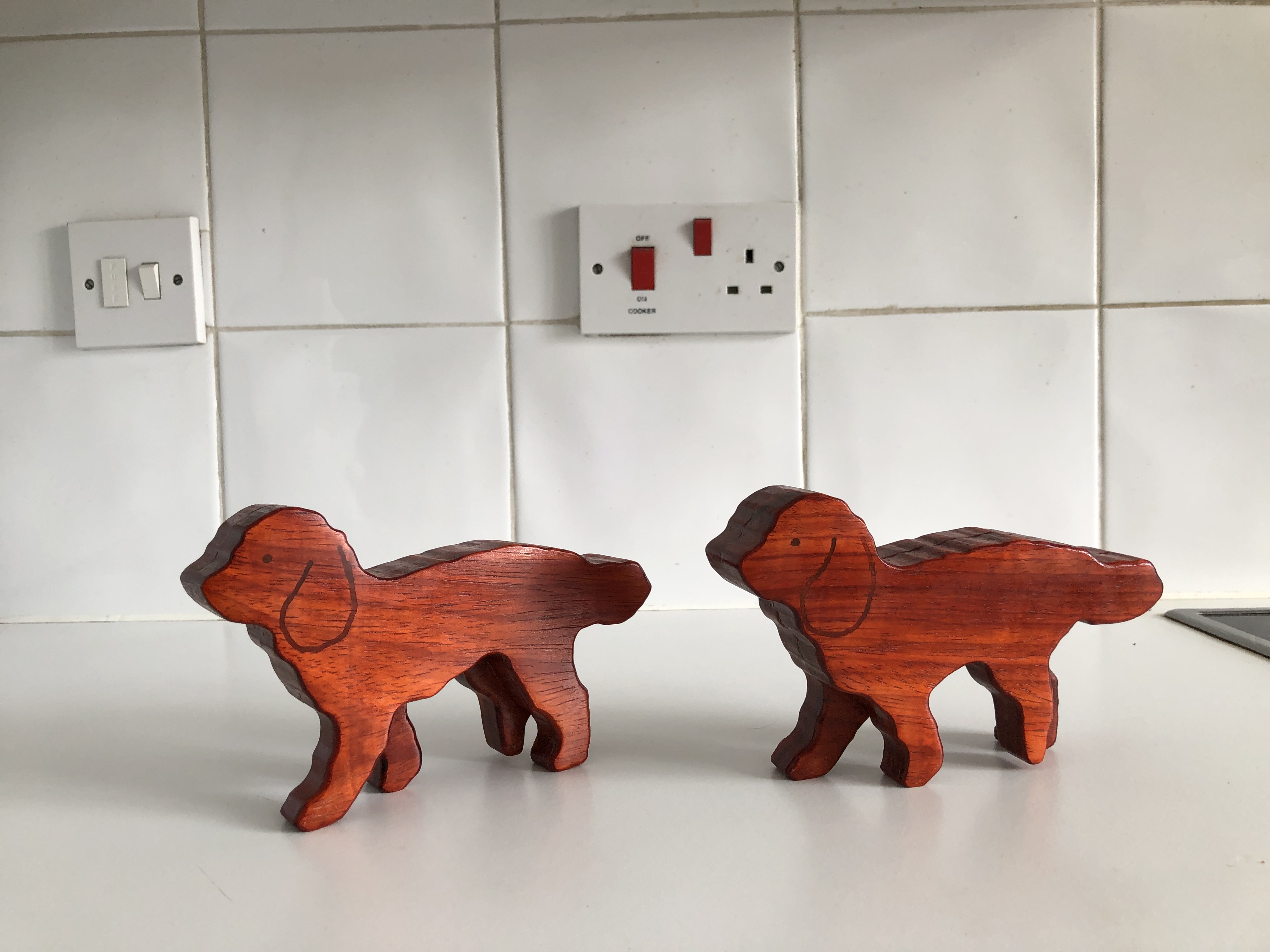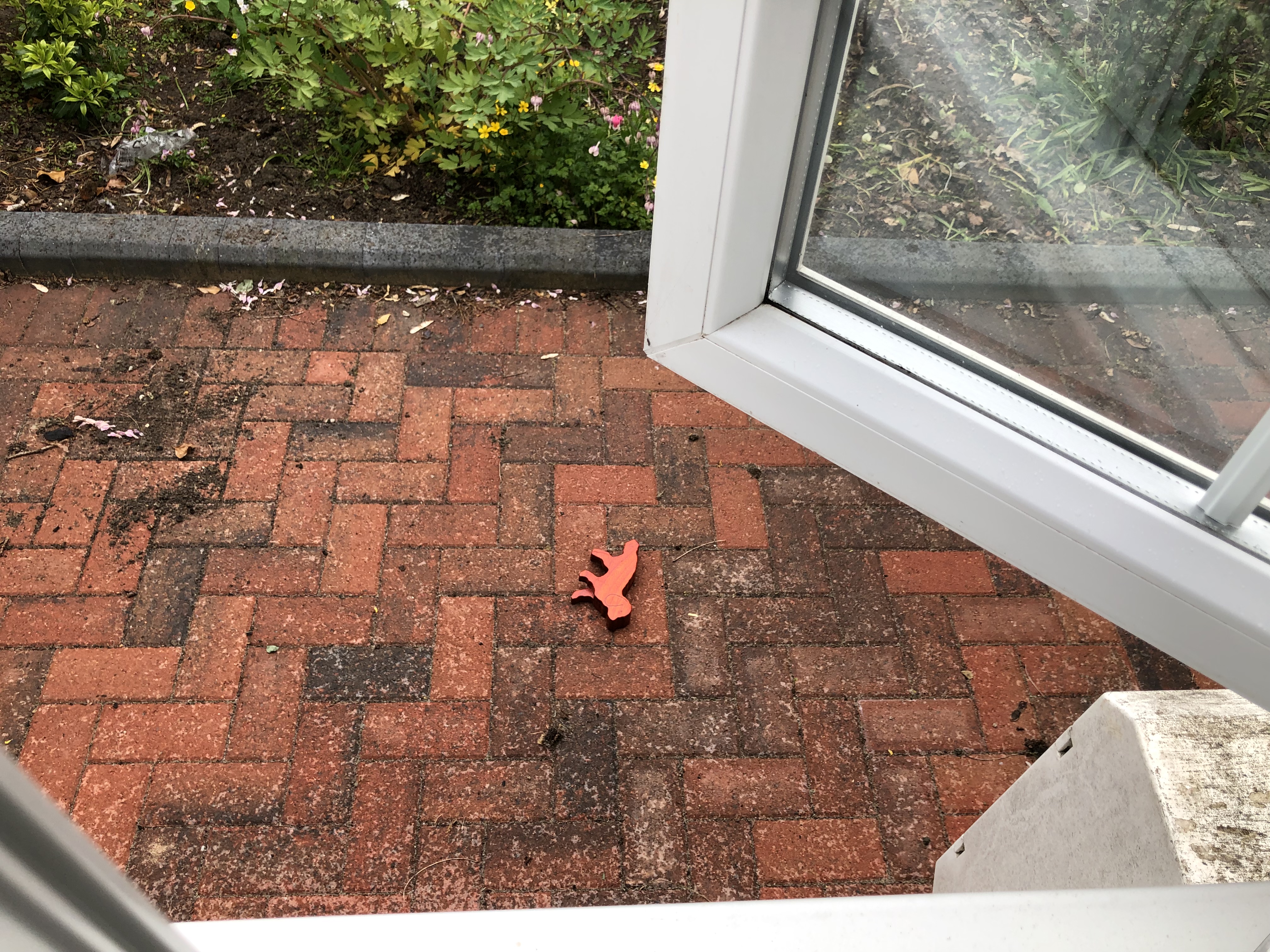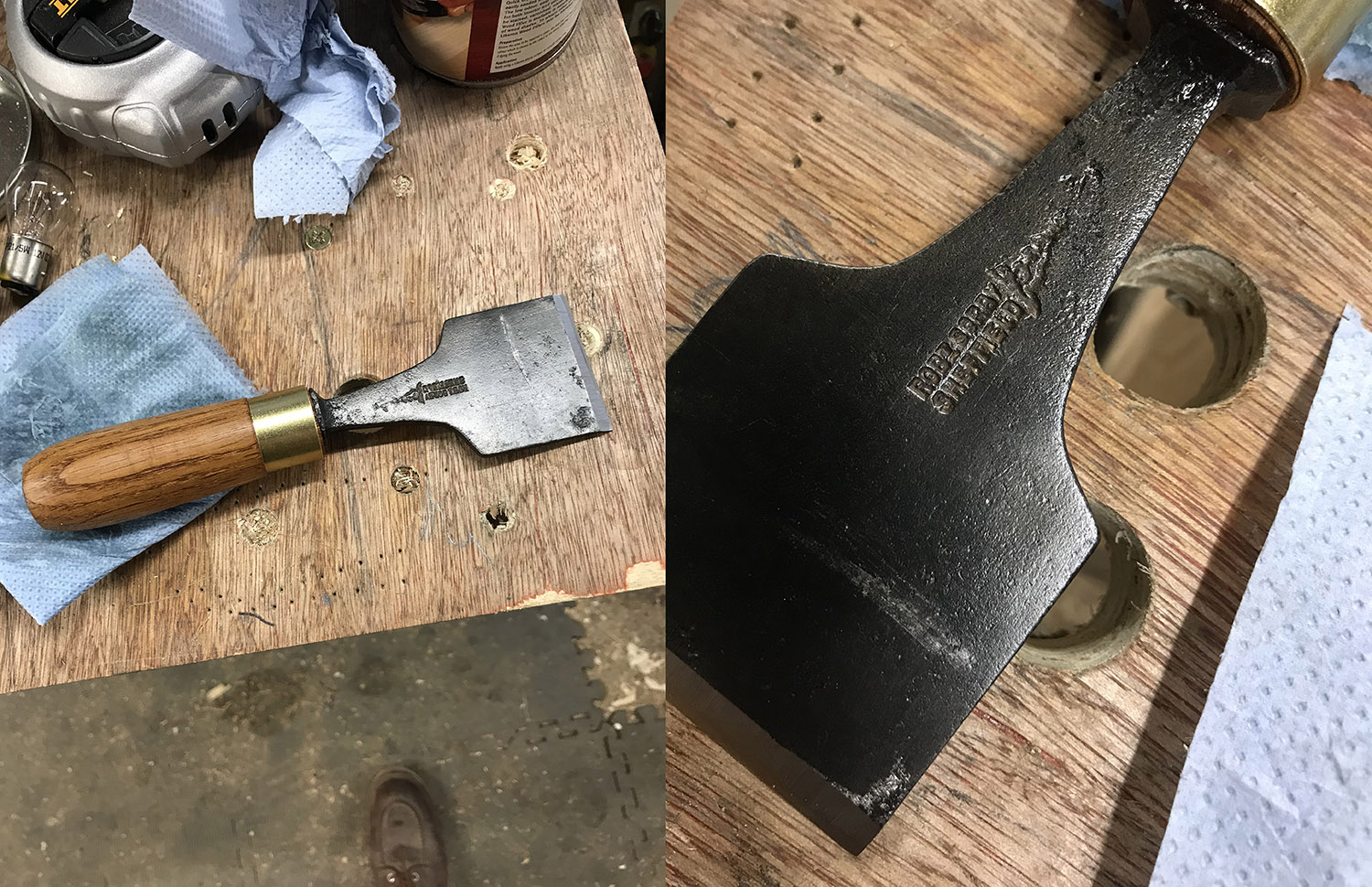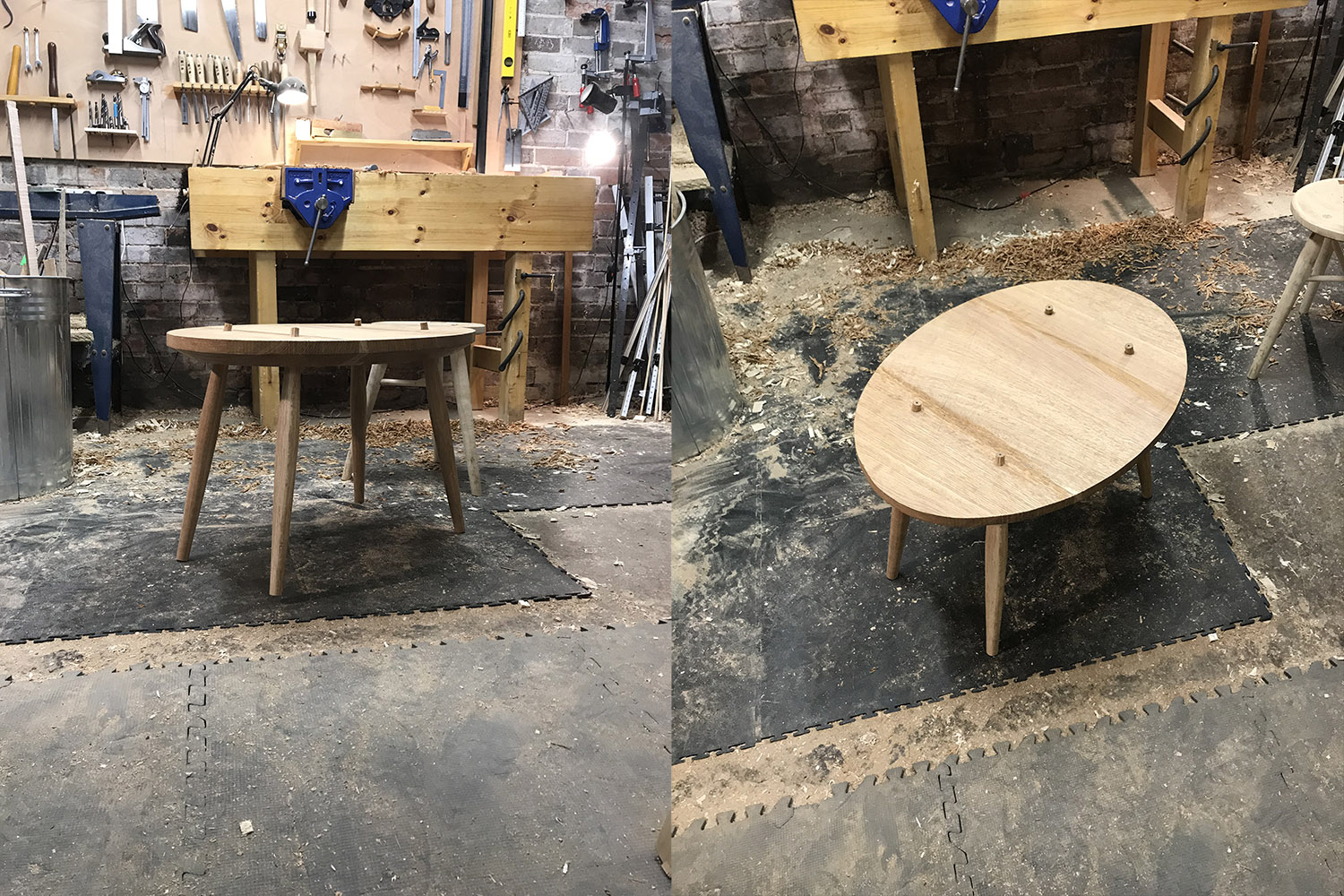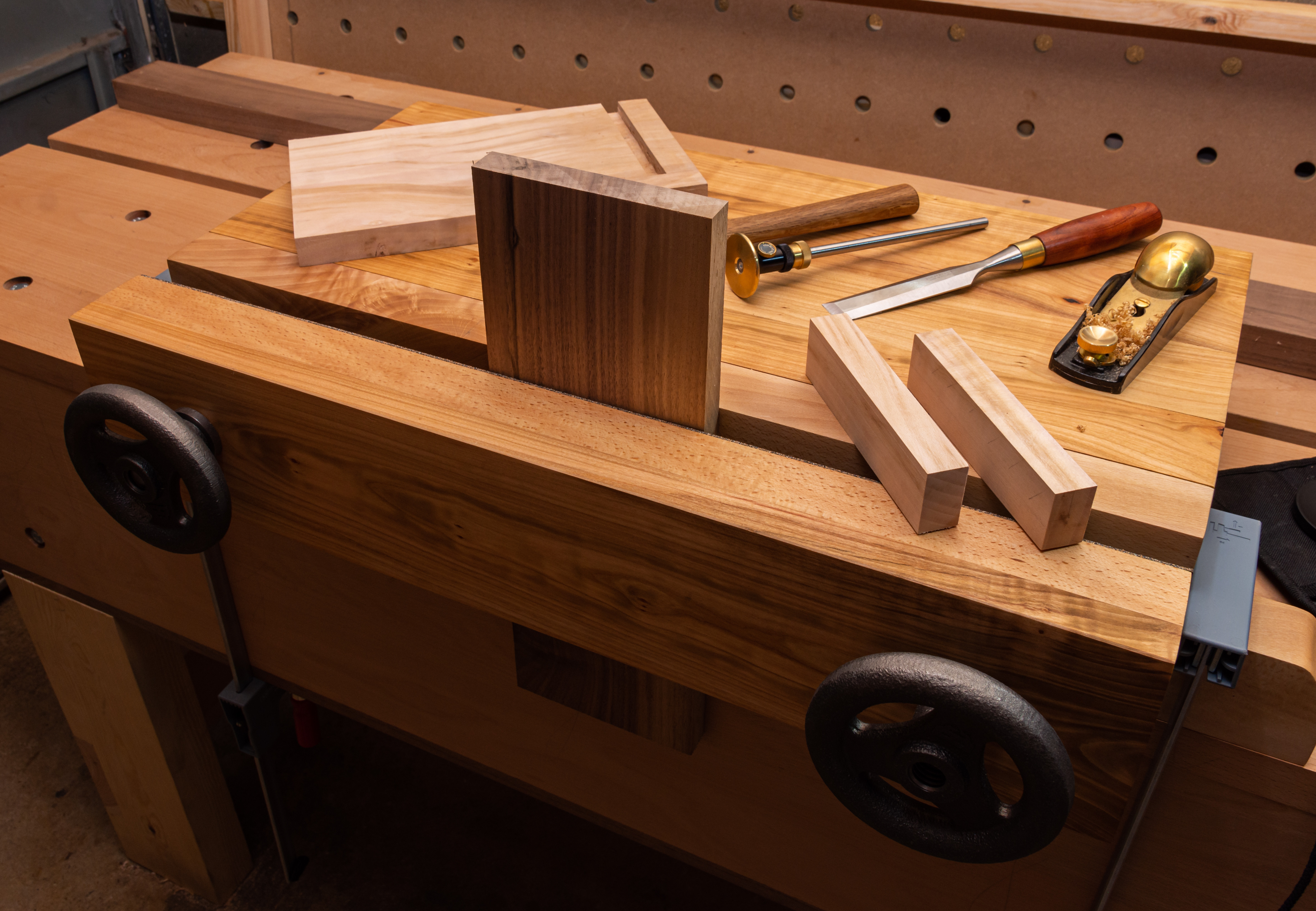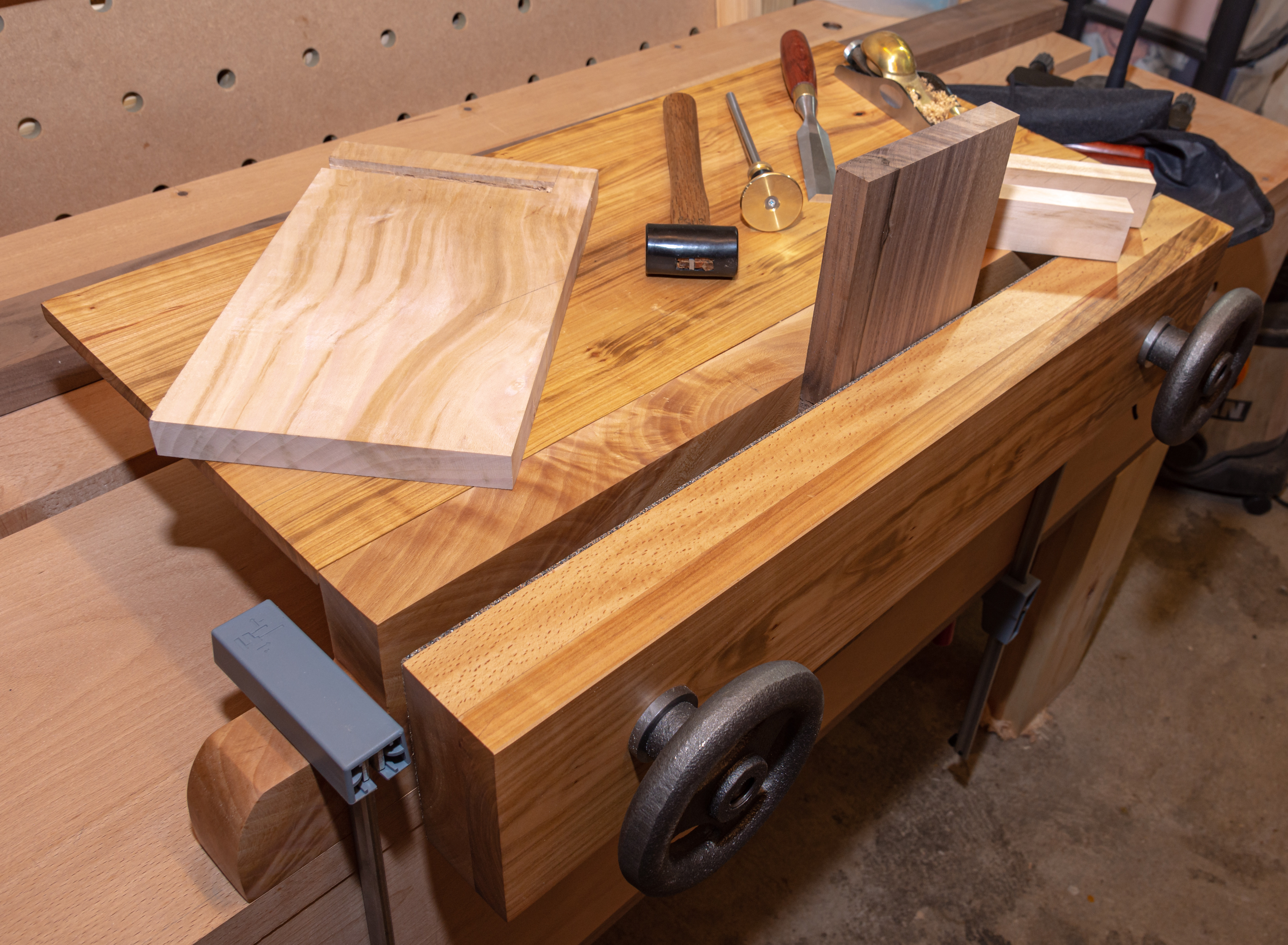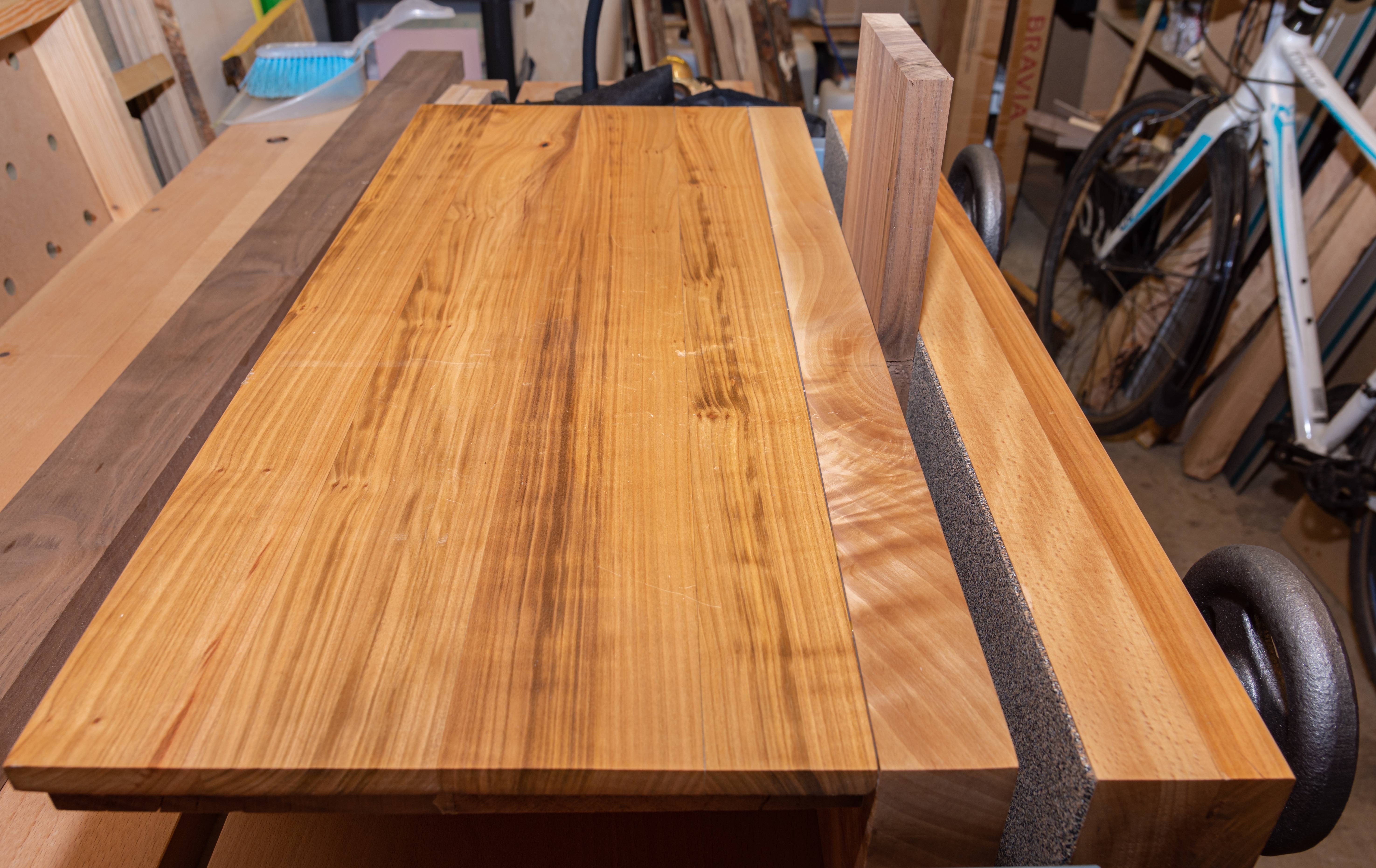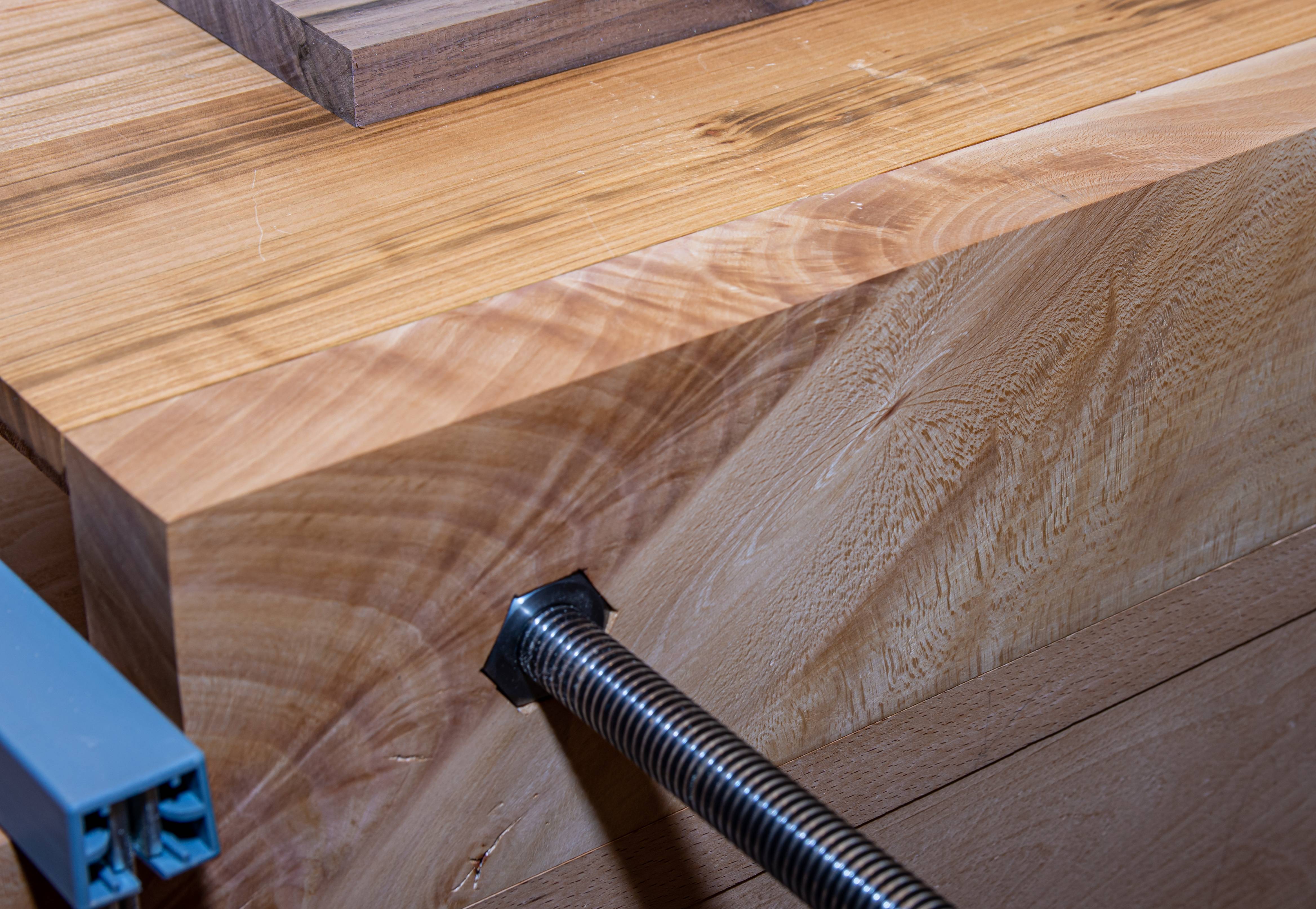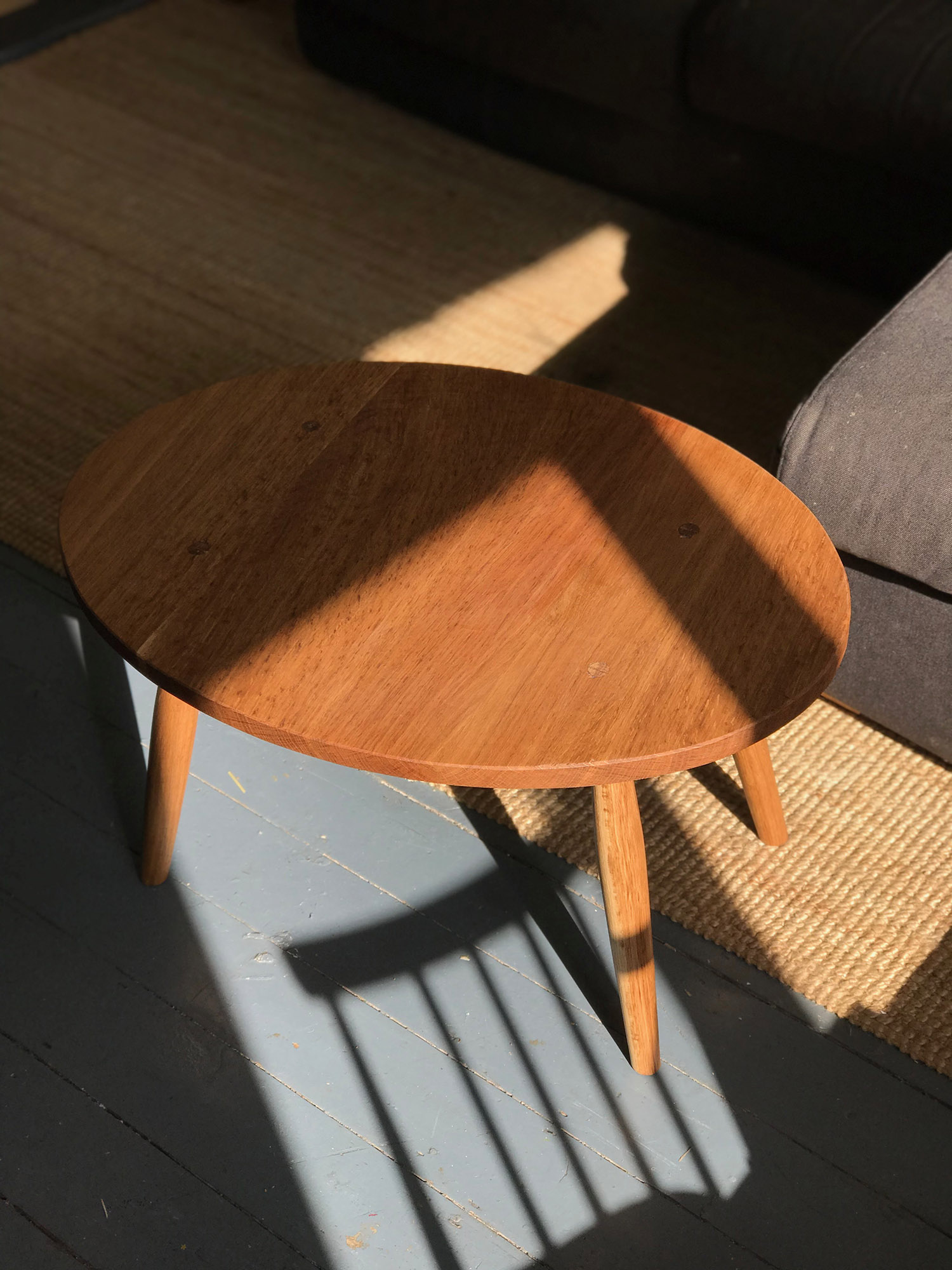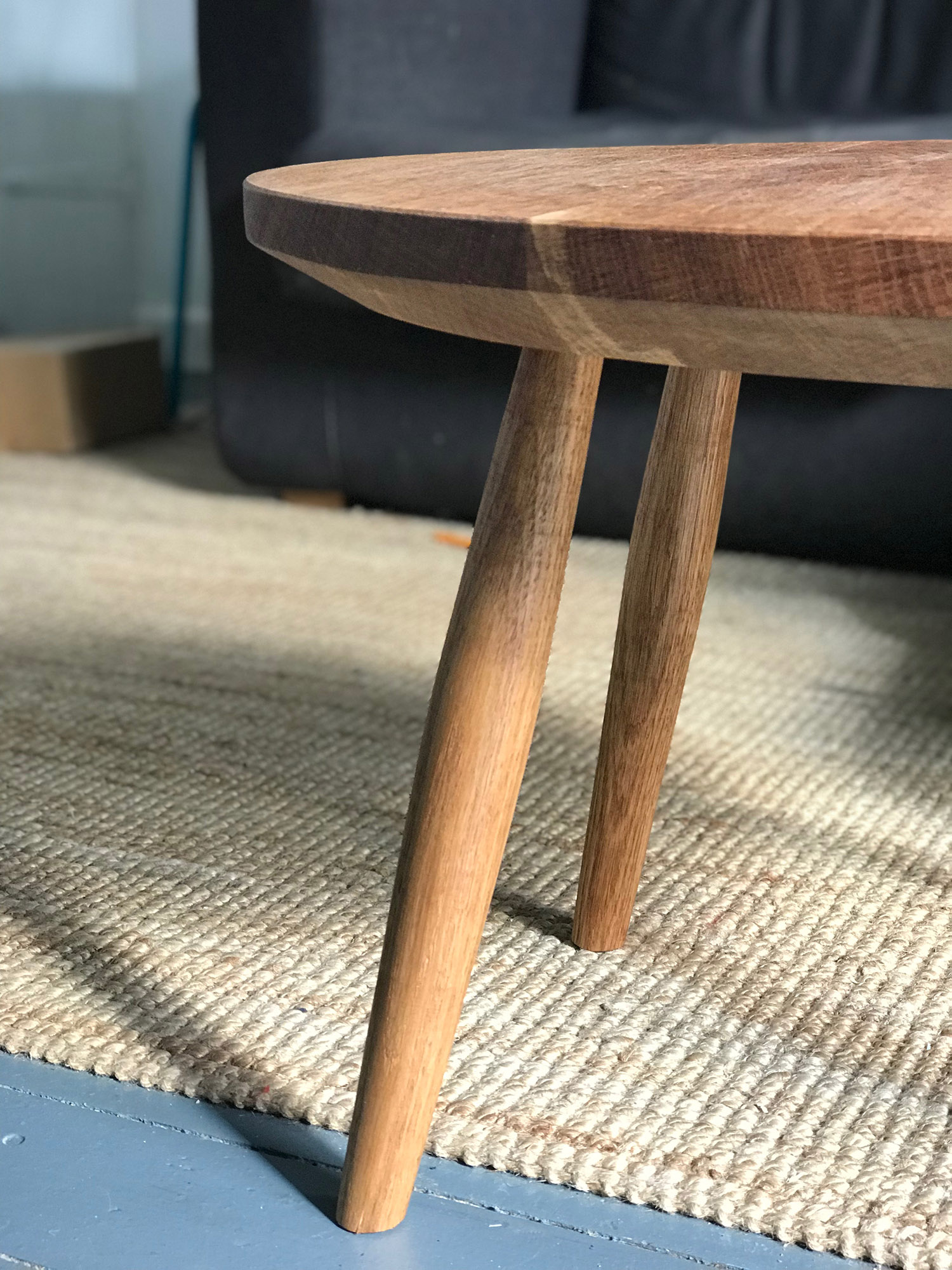custard":gi5xqqrh said:D_W":gi5xqqrh said:Telecaster style guitar, spruce (from a billet I found on ebay) and cherry neck, sawn out of a table top slab that I found (it's nice to have big wood to saw guitar bits out of so that you can get ideal grain orientation. Fingerboard resawn out of a piece of birdseye maple that I bought for the purpose. Birdseye could be a little more intense, but the spruce guitar blank is divine, worked reasonably well and there was enough thickness for me to resaw off a nice piece of spruce to make a parlor acoustic out of.
Superb job!
=D>
Spruce is a beautiful timber, bit soft for furniture but I'm seeing increasing numbers of makers use Spruce for delicate pieces of furniture that won't see too much abuse. Not suitable for homes with small boys or big dogs, but for everyone else it's ideal!
Thanks, Custard. Generally, the spruce sold over here is low quality and low density, though I'm sure you can get some at a boat yard.
I haunt ebay for guitar blanks - for whatever reason, they're cheaper than I could get the lumber to make a blank, and this one was $50 dead quartered, already glued into a large enough blank to use for the body and cut off a section for a small parlor acoustic. resawn off, that is.
The key to this one, and many more than the seller is offering is that it's uncommonly dense, but it still has some of that softness in the early wood. I was shooting for a 6-7 pound guitar and didn't quite believe the seller's weight quote, but he was right (he said these were salvage logs that had sunk - a popular thing over here now) - it is about as heavy as good quality cherry and made for a guitar just north of 8 guitars despite thinning the body below fender's spec. At any rate, it makes a wonderful guitar, and I put a pretty large roundover on the back and bound the top to protect it from splintering.
I was on a guitar board for a little bit, but couldn't hack the attitude of the folks there. "I don't know why you'd get spruce, you can't plane it, it'll be too soft, it'll splinter, it's hard to work with". It planes beautifully. First time I've worked with good stuff (sitka in this case), in resawing it, the late wood stripes were uncommonly hard to go with the soft early wood and it really felt funny with the frame saw.
Of course, in the end, being that the density is similar to heavier alder or cherry or anything else that makes a decent solid body guitar.....it sounds the same as anything else.
I fancy the idea of making one out of marshmallow density quartered pine if I can find some decent, but the neck joint on these is four screws and there isn't really that much there - probably asking for trouble.
Price here that I saw for good clear quartered spruce (that would be less dense) was around $10-$12 a board foot (about three times the price of cherry). It would make for monstrously expensive soft furniture!! Making a guitar with a heavier harder piece is sort of gaming it but a couple of hundred board feet of something this density would be interesting to play with. The common solid body guitar makers are spoiled by mahogany and alder and don't know how to deal with anything that you can't just hack off with a knife and still have no tearout. I got myself banned from the forum where I posted this - first time I've ever actually been banned from anywhere. They were having none of the discussion about planing with a cap iron or trying to improve design elements / outcome. I am not a fine worker and don't position myself as such, but even hacks will get more satisfaction out of trying to do good work. Failing only hurts the ego, and only if you allow yourself to have one.




